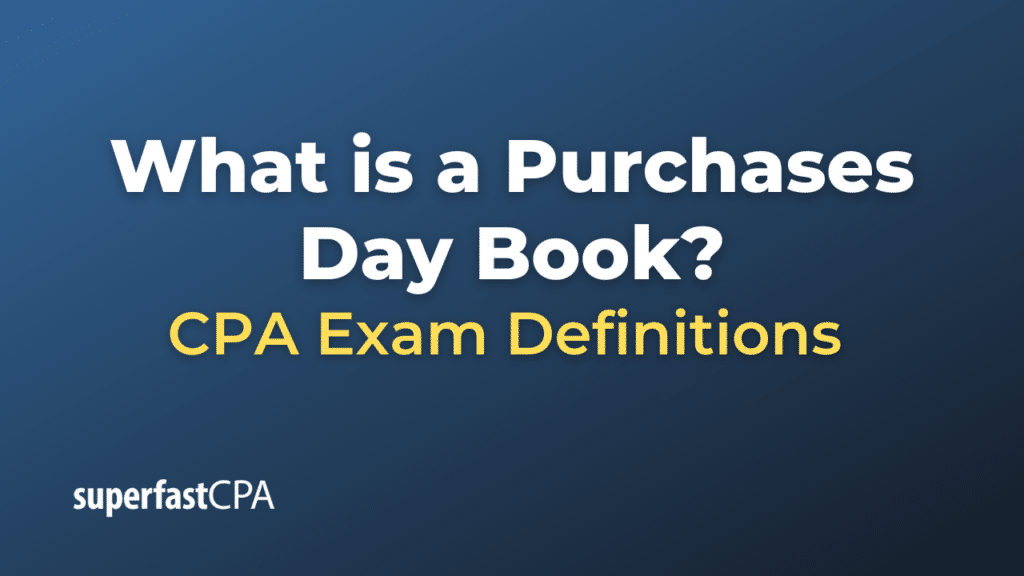Purchases Day Book
A Purchases Day Book, also known as a Purchases Journal, is a special journal used in the manual accounting system to record all credit purchases of goods during a specific period. It is part of the double-entry bookkeeping system and only includes purchases made on credit. Cash purchases are not recorded here; they are typically recorded in the cash book.
The Purchases Day Book is designed to ease the process of accounting by categorizing transactions of similar nature together. At the end of each accounting period (which might be a day, week, or month, depending on the company’s practices), the total in the Purchases Day Book is transferred to the Purchases Account in the general ledger.
Each entry in the Purchases Day Book typically includes the date of the transaction, the name of the supplier, the invoice number, a brief description of the items purchased, and the amount of the transaction.
Recording all credit purchases in the Purchases Day Book allows a company to easily see all such transactions at a glance, which can be useful for managing payables, tracking expenses, and auditing purposes. It also aids in preventing errors in the recording process.
Example of a Purchases Day Book
Let’s consider a business named “Healthy Snacks” that deals in snack foods. Below is an example of what their Purchases Day Book might look like for the month of August:
| Date | Supplier | Invoice Number | Description | Amount ($) |
|---|---|---|---|---|
| Aug 1 | Nutty Foods Inc. | 1456 | Nuts and dried fruits | 3,000 |
| Aug 5 | Crunchy Farm | 2018 | Boxes of granola bars | 2,500 |
| Aug 12 | Sweet Treats Ltd. | 1789 | Sugar-free candies | 1,800 |
| Aug 20 | Nutty Foods Inc. | 1460 | More nuts and dried fruits | 3,500 |
| Aug 28 | Crunchy Farm | 2030 | More granola bars | 2,200 |
|---|---|---|---|---|
| Total for August | $13,000 |
At the end of August, Healthy Snacks will total the amount column and make the following entry in their general ledger:
- Debit Purchases Account: $13,000
- Credit Accounts Payable: $13,000
This means that Healthy Snacks has increased its inventory by $13,000 through credit purchases in August, which is also the amount they owe to their suppliers.
This is a simplified example. In a real business, the Purchases Day Book could include hundreds or thousands of transactions per month, and might also be subdivided into different categories of purchases.













